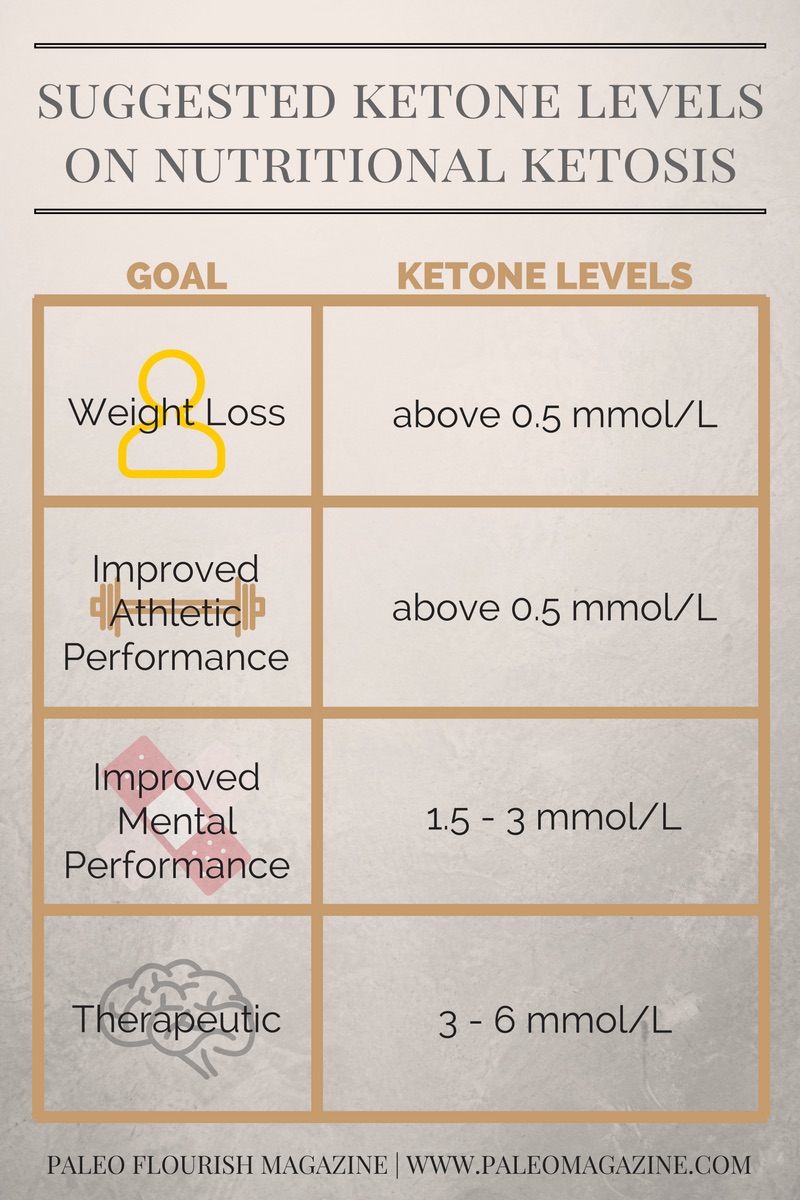The Ultimate Guide To The Keto Diet Plan

The ketogenic, or keto diet, is getting more and more popular, and for good reason – it’s helped a lot of people lose weight, get healthier, and get more energy. So exactly what is keto dieting?
So, in this article, I’ll detail what the keto diet is, what you eat, what you don’t eat, who should do it, and how best to get started.
I’ll answer a lot of frequently answered questions in this post, from how it’s different to Atkins and Paleo to whether you need to take exogenous ketones and how to measure your ketone levels.
Keto can be a fantastic tool, but just like the handy hammer, it’s important to understand what it is, when to use it, how you can use it properly, and what to do when it doesn’t work.
If you want to skip to a specific section, then just use the table of contents below:
Table of Contents – Ultimate Guide To The Keto Diet
- What is a Ketogenic or Keto Diet?
- A Brief History of the Keto Diet
- What is the Difference Between Ketosis and Ketoacidosis?
- Can I Lose Weight On A Keto Diet? And Are There Other Benefits?
- Is A Keto Diet Safe? Doesn’t My Body Need Carbohydrates?
- Who Shouldn’t Go On A Keto Diet?
- Isn’t The Keto Diet The Same As The Atkins Diet?
- How is Paleo different to Keto?
- Is There Any Science Or Proof That The Keto Diet Works?
- How Does a Keto Diet Work and What Do I Eat?
- Can Athletes Go On The Ketog Diet? Will It Adversely Affect Athletic Performance?
- How Do I Know If I’m In Ketosis (How To Measure Ketosis)?
- What Should Your Ketone Levels Be?
- Is It Healthy For Women To Go On The Keto Diet?
- Should You Go On A Keto Diet?
- Keto Diet Food List
What is a Ketogenic or Keto Diet?
In short, the keto diet is a way of eating that causes your body to burn fat (in the form of ketones) rather than sugar (in the form of glucose/glycogen). I’ll explain a little more in detail below, but you trigger fat burning by eating a lot of fat and very little carbohydrates.
There’s a lot of confusion about just how much fat, protein, and carbohydrates you should eat, and that’s because there are now several types of keto diet plans. Most of the research has focused on the very high fat (standard) keto diet. But if you’re looking for weight loss benefits then a high-protein variation of the keto diet might be better for you.
Here’s a really great video the explains the basics of a keto diet plan in more depth:
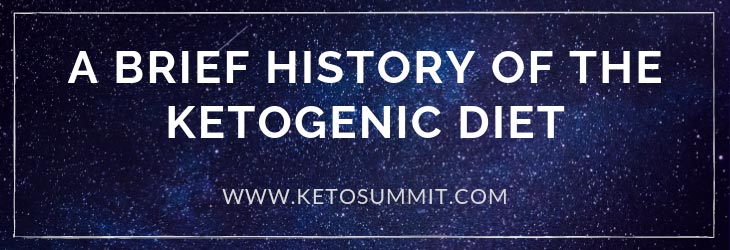
A Brief History of the Ketogenic Diet
The ketogenic diet (or keto, as we call it now) was originally designed by Dr. Russell Wilder at the Mayo Clinic to help treat kids with epilepsy seizures. During the 1920s and 1930s, it got very popular as an effective way to treat epilepsy, but as anti-seizure medication became more prevalent during the 1940s, the keto diet was shelved (despite its effectiveness).
In more recent years, the popularity of the low carb (or Atkins) diet has prompted a resurgence of interest into the keto diet plan, this time as a highly effective method of losing weight — and losing fat, in particular. A lot of people have found the keto diet helps them stay healthy and in shape.
Advocates include top athletes like Ben Greenfield, as well as people who have struggled with weight issues for a long time like Jimmy Moore.
Sounds like a great plan right? However, when you mention the keto diet to medical professionals, there might be some confusion and misinformation.
The main confusion has arisen due to 2 very similar sounding words: ketosis and ketoacidosis. They sound similar but are actually very different.
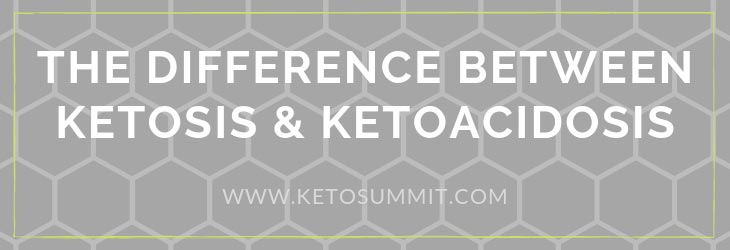
What is the Difference Between Ketosis and Ketoacidosis?
KETOSIS:
When you’re on the keto diet plan, your body will go into a state of ketosis, which is the metabolic state that occurs when your body uses ketones as its primary energy source instead of glucose.
During ketosis, your body breaks down fat to use as energy instead of using carbohydrates for energy (as normally happens when you eat food containing carbohydrates).
If you’re looking to burn fat, then ketosis can be a very good thing. It forces your body to burn fat as fuel, particularly the fat in your “trouble areas” that’s been stored in your body for a long time.
KETOACIDOSIS:
Ketoacidosis, on the other hand, is a very serious condition that typically occurs in type 1 diabetics (and very rarely in end-stage type 2 diabetics). In ketoacidosis, the body doesn’t get enough insulin, which causes the body to believe that it’s short on glucose. In actuality, there’s a lot of glucose in the blood that just can’t get into the cells. Because of that, the body starts producing ketones, which results in very high blood ketone levels at the same time as very high blood sugar levels.
This is a highly dangerous situation, and patients with ketoacidosis may fall into dangerous comas.
Dr. Peter Attia, M.D. describes the difference between the ketosis and ketoacidosis (and he also admits to having been confused by it before and incorrectly advising a patient to beware of ketoacidosis on the Aktins plan, so it is a pretty common misconception!). He summarizes, “Let me reiterate, it is physiologically impossible to induce DKA in anyone that does not have T1D or very, very, very late-stage T2D with pancreatic ‘burnout.'”
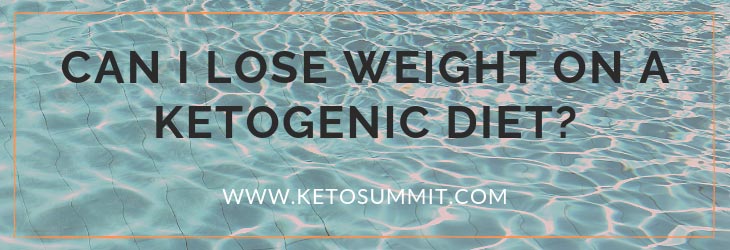
Can I Lose Weight On A Keto Diet? And Are There Other Benefits?
This is probably the question you care most about – can you lose weight on a keto diet?
There are many reasons why a keto diet could perhaps help you lose weight (and many of these reasons are similar to the reasons why low carb and Paleo diets work):
1. KETOSIS ALLOWS YOUR BODY TO BURN FAT
When your body is in ketosis (which occurs when you’re following a keto diet plan), your body is primed to burn fat as your energy source (rather than glucose). While some of that fat will come from fat you eat (and you have to eat quite a bit of fat to get into ketosis), some of it will likely also come from your body’s fat stores. And burning your body’s fat stores is exactly what everyone looking to lose weight needs.
In particular, if you have what’s called “poor metabolic flexibility,” your body may not be very good at switching back and forth between burning carbs and burning fat for energy. If that’s the case, then the most common result is that you don’t burn much fat at all, you get cravings for sugar and carbs, and you have a hard time losing weight. A keto diet plan is not the only or even a perfect answer to this problem, but it is a good answer. By following a keto diet plan, you force your body to burn fat, and you don’t switch back and forth, so your body stays in fat-burning mode all the time.
Please note that a low carb or Paleo diet could also be a keto diet! If you’re eating a diet with low enough amount of carbohydrates to trigger ketosis, then that diet is technically keto, even if your plan says it’s paleo or low-carb. This is one of the reasons it can be hard to answer the question “what is a keto diet?”, because the keto diet can be done several different ways. I highly recommend you check out our Paleo diet vs. keto diet review – it’ll help you understand the difference between the two diets better.
2. LESS HUNGER
I still remember when I used to count calories. I was constantly hungry! My salads didn’t satiate me, and toast just made me hungrier! I used to go to sleep hungry and upset because I could never seem to eat less than 1600 calories.
What I didn’t know back then was that my diet was actually making me hungrier. When we mix carbohydrates and fats in the same meal, we actually want to eat more. It’s the reason that you could eat cake or cookies until you’re sick (because they’re full of sugar and fat from butter), but you usually won’t do the same with steak (which is mostly protein with some fat).
Remember how I talked about “poor metabolic flexibility” above? Well, if you have poor metabolic flexibility, then eating carbohydrates is almost always going to make you hungry an hour or two after a meal.
So while you’re eating more calorie-dense fats on a keto diet plan, most people find that they end up eating less overall (in terms of calories), without trying as hard. And they’re less hungry, which usually also means they’re happier and less moody.
Generally, if you’re less hungry when you’re on a diet, you’re more likely to stick with it, so your chances of losing weight long term are higher.
3. A KETOGENIC DIET MAY SOLVE OTHER HEALTH PROBLEMS
One aspect of losing weight that many people don’t talk about is that your existing health conditions may be making it really tough to lose weight.
That may well be why your friend or spouse can do a diet for a month and drop 20 pounds while you gain 5 pounds following the same plan. It’s not that you’re doing anything wrong with, and there may not even be anything wrong with that way of eating (for weight-loss purposes), but there may be some underlying health conditions that are making your body cling onto that extra weight.
A keto diet plan may help certain health conditions (like type 2 diabetes, gut dysbiosis, sleep disorders, fatigue, etc.) and may make it easier for you to lose weight. There’s also research into using a keto diet to cure/prevent cancer (see Dr Seyfried’s research for more) and brain disorders like Alzheimer’s (see Dr. D’Agostino’s research for more).
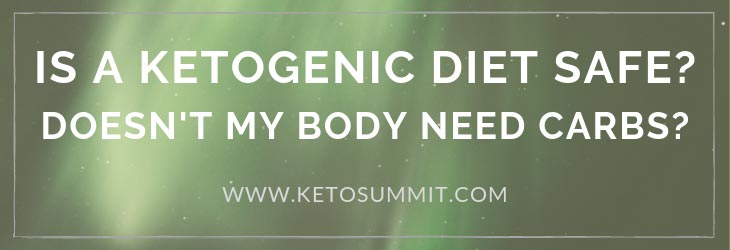
Is A Keto Diet Safe? Doesn’t My Body Need Carbohydrates?
There’s often a misconception that our body somehow needs carbohydrates. But the fact is our body can live without carbohydrates just fine as long as you eat plenty of good fats and protein.
As Mark Sisson writes, there is actually no requirement for any “essential dietary carbohydrates” in human nutrition.
However, our brains do require glucose (a form of carbohydrate). On average, your brain takes up 20% of your body’s energy expenditure, which equates to around 100-120 grams of glucose. It sounds like we therefore need to eat carbohydrates to supply sufficient energy to our brains daily.
Well, if that were the case, then humans would only be able to live a few days without food (because we can’t store enough glucose in our bodies to last for any longer). As anyone who has ever done a week- or month-long water fast knows, humans can last a lot longer than a few days without food. So, where does that glucose to supply our brain come from when we fast for a week?
As Robb Wolf states in The Paleo Solution, “Our bodies can make all the carbohydrates it needs from protein and fat.”
And as Dr. Peter Attia puts it, “The reason a starving person can live for 40-60 days is precisely because we can turn fat into ketones and convert ketones into substrate for the Krebs Cycle in the mitochondria of our neurons. In fact, the more fat you have on your body, the longer you can survive.”
I’m not saying here that carbohydrates are necessarily bad for us, but they’re not essential. Listen to our podcast with Dani Conway about how to create a keto plan based on your own body.
Who Shouldn’t Follow a Keto Diet Plan?
While carbohydrates are not essential for our bodies, there are some people for whom a keto diet plan isn’t ideal.
- Type 1 Diabetics
- Type 2 Diabetics using Insulin
- Women who are breastfeeding
- People on certain medications e.g., for high blood pressure
If you fall into one of those categories, then please be extra cautious when trying keto. The ketogenic diet is a tool, but that doesn’t mean it should be used all the time and by everyone. We highly suggest running medical tests to ensure you don’t have any underlying health conditions before you start any sort of diet or exercise program.
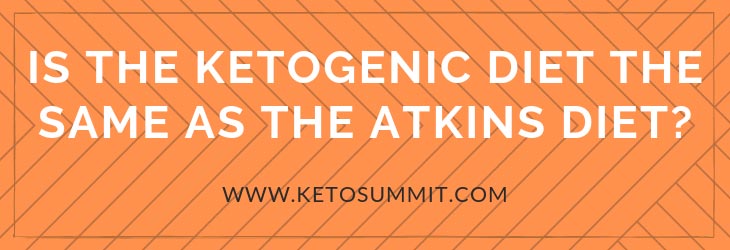
Isn’t The Keto Diet The Same As The Atkins Diet?
Not really (it depends on how you interpret the Atkins diet and what you eat on it):
1. The Atkins Diet is a Low Carb Diet
Many people interpret the Atkins diet to be a low carbohydrate plan, and when I tried the Atkins diet, that’s how I understood it. I counted the grams of carbohydrates I ate but didn’t really pay attention to the protein or fat amounts.
Some people replace the carbohydrates they would otherwise be eating with more lean meat (thereby increasing the protein intake but not the fat intake). And unfortunately, eating too much protein is one thing that can prevent your body from getting into ketosis, which is the main benefit of keto.
Of course, if you think Atkins stands for a high fat diet, then what you think of as Atkins could be much closer to the keto diet.
2. The Atkins Diet Doesn’t Require Ketone Testing
In general, most people on the Atkins diet don’t do ketone testing to make sure they’re in ketosis, whereas that’s a big part of keto. (Because being in ketosis is such a crucial component of the keto diet,)
However, Dr Atkins knew about ketosis and promoted it. He never measured blood ketone production by his patients, but he did use urine ketone testing strips “for every patient on every visit” – according to Registered Nurse Jackie Eberstein, who worked with Dr Atkins, and as Jimmy Moore reports in Keto Clarity, Dr Atkins later added a machine for analyzing ketones in the breath as well to his clinic.
However, many people do call the more modern form of the keto diet (where you eat higher carbs and protein than in the traditional epilepsy studies) a Modified Atkins Diet.
How is Paleo different from Keto?
In some respects Paleo is very similar to the Keto diet, and if I was going to give a very basic definition of a keto diet, I’d say it’s a lower carb version of Paleo.
If you cut out the sweet potatoes, honey, starchy tubers and sugary fruits from Paleo, then you’re left with a pretty healthy keto diet.
More specifically, the differences between the Paleo and keto diets lie in their emphasis. Paleo emphasizes the ancestral diets and looking at food quality (nutrient density and avoiding toxins like gluten). Keto emphasizes being in the metabolic state of ketosis where you’re predominantly burning ketones for energy.
However, you can follow a Paleo plan and be in ketosis. Or you can be eating an unhealthy non-Paleo Keto diet filled with inflammatory low carb or high fat foods (e.g., seed oils, artificial sweeteners, soy).
So, while being in ketosis is important, it’s also essential that you pay attention to what foods you’re eating. Just because it’s low in carbohydrates or high in fat doesn’t mean it’s always healthy for you.

Is There Any Science Or Proof That The Keto Diet Works?
Given that the ketogenic diet has only recently become very popular, there is a dearth of reliable studies on it. There’s a lot of n=1 (self-experiments and anecdotal evidence) experiments like triathlete Ben Greenfield’s experiment.
However, researchers like Jeff Volek and Stephen Phinney, authors of The Art and Science of the Low Carbohydrate Performance, are starting to get some reliable data.
If you want to read more about the science behind ketosis, then I highly recommend checking out Dr. Peter Attia’s blog here.

How Does a Keto Diet Work and What Do I Eat?
OK, let’s get down to the details. The keto diet is relatively simple in terms of the rules you have to follow. The basic eating tenets of a ketogenic diet are as follows:
- Eat Very Little Carbohydrates.
- Eat Lots of Fats.
- Eat Moderate Amount of Protein.
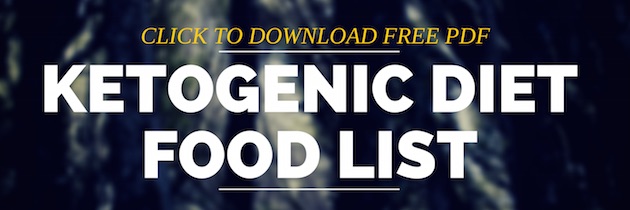
The exact amounts of each macronutrient you need for your body to go into the ketosis state will vary from person to person, and there’s a whole section below on how to check whether your body is in ketosis or not. But to help you get into the general ketosis ballpark, here are some recommendations from experts.
CARBOHYDRATE AMOUNT FOR KETOSIS
For your carbohydrate amount, Jimmy Moore suggests in his book Keto Clarity that total amount must be at least under 100g per day and for most people under 50g. And for people with insulin sensitivities, you might need to consume under 30g or 20g per day. Jimmy has a detailed 3-step plan in his book to determine your carbohydrate tolerance.
For serious athletes, the carbohydrate amount might be higher depending on your level of training.
PROTEIN AMOUNT FOR KETOSIS
Jeff Volek, PhD and Dr. Stephen Phinney, MD suggest that to calculate your minimum and maximum protein intake for staying in ketosis, you should multiply your weight (measured in lbs) by 0.6 and 1.0 to get the minimum and maximum amount of protein in grams you should eat each day.
I weigh 115 lbs, so for ketosis, my minimum protein intake per day is 115 x 0.6 = 69 grams, and my maximum protein intake per day is 115 x 1 = 115 grams.
Dr. Phinney adds, “In our experience, people on a ketogenic diet who think they are eating protein in moderation are often well above [the recommended amount] due to fear of eating fat to satiety.” It’s important to get enough protein, but equally important to get the right amount of fat.
Jimmy writes in his book that Dr. Donald Layman suggests limiting protein amounts to 30g per meal and no more than 140g per day.
FATS AMOUNT FOR KETOSIS
According to Registered Dietitian Maria Zamarripa, RD, “The ketogenic diet highlights the “fat burning” effect of ketosis. The key factor in the ketogenic diet is the rearrangement of macronutrients to make fat the primary fuel source.”
After limiting carbohydrates and eating a moderate amount of protein, the rest of what you eat should be healthy fats like ghee, coconut oil, olive oil, avocado oil, and animal fats. And yes, that does mean you end up eating quite a bit of fat!
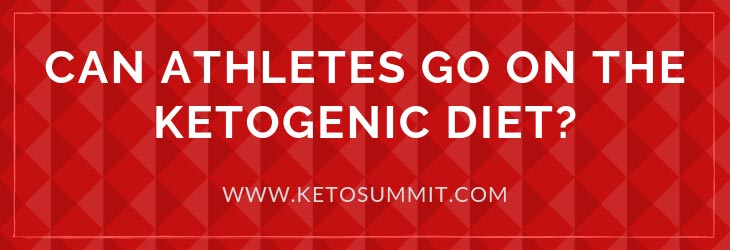
Can Athletes Go On The Keto Diet? Will It Adversely Affect Athletic Performance?
This is another area where there is debate. Some serious athletes like Ben Greenfield and Chris Kelly find ketosis to really help their athletic performance, but there are only a few scientific studies that back this up.
Most of the studies on athletic performance on the keto diet that I’ve come across have been performed by Stephen Phinney and Jeff Volek. Reviews of their work suggest that a keto diet may help with endurance sports, but may not be great for sports that require bursts of power.
If you’re interested in reading about the studies as well as criticism of them, Anthony Colpo has written quite a detailed and rather scathing (but I think generally pretty valid) critique of them here.
Even Ben Greenfield puts a big red warning on his keto diet review, detailing his experimentation while training for Ironman Canada. He suggests some potential health risks with hardcore training on a keto diet.
And one last note on keto diets for athletes – if you are doing some serious training, then the amount of carbohydrates you can eat and still be in ketosis may be well higher than generally recommended. For example, Ben Greenfield was consuming between 50-200 grams of carbohydrates during his Ironman training.
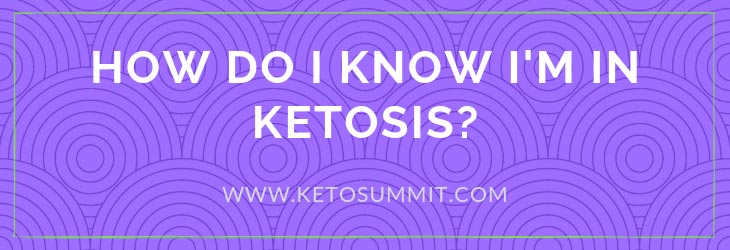
How Do I Know If I’m In Ketosis (How To Measure Ketosis)?
The easiest way to measure whether your body is in ketosis or not is to measure the ketone levels in your body. To make things complicated, there are actually 3 types of ketones:
- Acetoacetate (AcAc) – detected mostly in your urine
- Beta-hydroxybutyrate (BHB or ?-hydroxybutyrate) – detected mostly in your blood
- Acetone* – detected mostly in your breath
*Acetone is a metabolite of Acetoacetate.
Your blood ketone levels are generally considered to be the best indicator of ketosis and whether the keto diet is ‘working,’ but measuring blood ketone levels is also the most expensive method.
That’s why many people still measure their urine and breath ketone levels instead (which can provide some indication of how you’re doing).
So, here’s how you can measure your ketone levels (along with the pros and cons of each method):
 1. Urine Strips (Ketostix). You basically pee on these or dip them into some of your urine that you collect. The strip will change color in proportion to levels of AcAc. However, most people don’t consider the results from the urine strips to be a particularly good indication of ketosis, so while the urine strips are cheap, it may not be that helpful!
1. Urine Strips (Ketostix). You basically pee on these or dip them into some of your urine that you collect. The strip will change color in proportion to levels of AcAc. However, most people don’t consider the results from the urine strips to be a particularly good indication of ketosis, so while the urine strips are cheap, it may not be that helpful!
 2. Blood Ketone Meters (along with ketone measuring strips). This is very similar to the blood glucose meters (and in fact, they also work as a blood glucose meter if you buy the glucose measuring strips) – you prick your finger with an lancet and then use the ketone measuring strips connected to the blood ketone meter to soak up a small drop of blood. The blood ketone meter will then do its thing and give you a blood ketone level reading. The main problem with these is that the ketone measuring strips are super expensive (around $5 per strip).
2. Blood Ketone Meters (along with ketone measuring strips). This is very similar to the blood glucose meters (and in fact, they also work as a blood glucose meter if you buy the glucose measuring strips) – you prick your finger with an lancet and then use the ketone measuring strips connected to the blood ketone meter to soak up a small drop of blood. The blood ketone meter will then do its thing and give you a blood ketone level reading. The main problem with these is that the ketone measuring strips are super expensive (around $5 per strip).
 3. Breath Ketone Meter (Ketonix Sport). This is a new meter that was recently released to measure ketones in your breath. There’s no prick to draw blood, it charges through a USB plug, and no strips are required. You warm up the meter for a few minutes, blow into the meter for 6-15 seconds, and then it gives you a reading.
3. Breath Ketone Meter (Ketonix Sport). This is a new meter that was recently released to measure ketones in your breath. There’s no prick to draw blood, it charges through a USB plug, and no strips are required. You warm up the meter for a few minutes, blow into the meter for 6-15 seconds, and then it gives you a reading.
What Should Your Ketone Levels Be?
This turns out to be a slightly complicated question to answer. The optimal ketone levels for you will depend a lot on what your goals are for being on a keto diet.
If it’s weight loss, then your ketone levels can be much lower than someone who is doing keto for cancer or epilepsy treatment. If you’re wanting to boost your ketone levels, an exogenous ketone supplement can be a great way to do that, with almost no extra effort.
Check out this post for a more comprehensive answer.

Is It Healthy For Women To Go On The Keto Diet?
There are many women who have successfully gone on the ketogenic diet (see keto diet reviews by Anne and ketogenicwoman).
However, there’s still a lot of debate as to whether a keto diet places too much stress on a woman’s body. Jamie Koonce has here defended the keto diet for women. But Stacy and Sarah suggest otherwise in this talk.
So, if you’re a woman looking to go on a keto diet, I would highly suggest you read the next section of this article and listen to this!

Should You Go On A Keto Diet?
As with any diet or fitness program, it’s a personal choice. My take is that a keto diet could be great if you already have your body and health pretty much sorted out.
What that means is that you’ve already done lab testing to make sure you don’t have health conditions like adrenal fatigue, thyroid issues, vitamin or mineral deficiencies, or parasites or other gut pathogens. Because if you do have any of these issues (or others), it’s quite possible that a keto diet could just place more stress on your body and perhaps even exacerbate some of these issues (which I think is especially likely in the case of thyroid conditions).
And if you do try a keto diet, remember that the basic tenets of a Paleo diet still apply (i.e., make sure you eat lots of nutrient-dense foods and foods low in toxins). I highly encourage you check out our keto diet food list (link below).
While a keto diet can be very similar to a Paleo diet, many keto diet websites will recommend foods like dairy products that you might be sensitive to as well as peanut and soy products (this article explains why soy isn’t good for you and this one explains why peanuts aren’t good for you).
WANT THE KETO DIET FOOD LIST EMAILED TO YOU?
Click here to get the keto diet food list emailed to you directly. Or if you prefer to view it on the website, here’s the link.
Images: Copyright (c) joanna wnuk, Grafvision, grafnata, snyfer, Nitr, arinahabich from Fotolia Jasmin Merdan from 123RF

